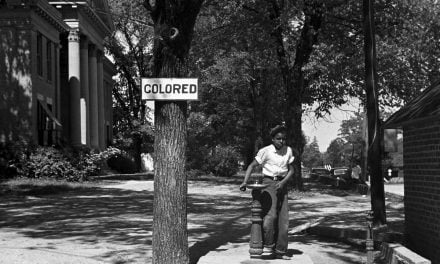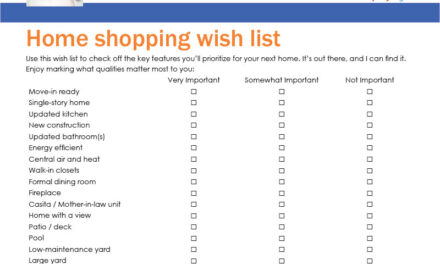2022’s soaring mortgage rates catapulted power out of the hands of California’s sellers and firmly into the hands of its buyers — those willing to persist in the face of higher mortgage payments, falling home prices and an ongoing housing market recession, anyway.
A homebuyer’s ability to qualify to borrow mortgage funds and buy a particular home depends primarily on their:
- income (moving slowly, at roughly the rate of long-term consumer inflation);
- down payment (also growing slowly with their limited ability to save); and
- current mortgage rates (which are volatile, changing daily, trending up long-term and nowhere near the record-low pandemic rates of 2020-2021).
Thus, any rise in mortgage rates instantly cuts the amount they can borrow, and the price they can pay for a home is reduced.
In 2022, this dynamic was a force of nature in the housing market. The maximum mortgage funding potential homebuyers use to pay the seller’s price was slashed with each bump in mortgage interest rates while cutting buyer purchasing power, as more and more homebuyers dropped out — by choice, or by force of economics.
Related article:
Press Release: Buyer Purchasing Power Index ends 2022 31% below a year earlier
During 2022, FRM rates jumped nearly four percentage points, from near 3.0% in January 2022, peaking at 7.0% in June 2022 and falling back to 6.4% by year’s end.
The result was buyers, whose income justified the same or higher monthly mortgage payment, had less money to spend to buy their particular home due to higher mortgage rates alone.
Put another way, while home buyers and mortgage lenders are ready, willing and able to do deals with each other, the sole holdout in the housing triumvirate is property sellers. They are unwilling (not ready, and maybe not mentally able) to acknowledge the consequences of today’s mortgage funding environment. The only participant in the home sale triangle (consisting of the buyer, lender and seller) with flexibility is the seller — and their asking price.
The National Association of Home Builders (NAHB) laments that while 34% of U.S. households were able to qualify to purchase a new home at the 3.2% mortgage rate seen in January 2022, just 20% of households qualified at the 7.1% mortgage rate seen in mid-2022.
However, the NAHB’s note about the steep drop in qualified homebuyers is not applicable to the broader real estate market. Worse, it is only true if home prices remain at their height. To mute the NAHB’s weird approach to qualified buyers, California home prices began to nosedive in mid-2022, now 8% below the peak in the low tier and 11% below the peak in the mid- and high tier, as of November 2022 — and falling, to be temporarily interrupted by a mid-2023 seasonal homebuying surge.
Sellers have only begun to drop their prices and need to quickly continue to match reduced mortgage funding with the same vigor they possessed to raise prices when their buyers were able borrow more at way lower rates — and all for the same particular house.
When homebuyers set their sights lower than their particular home, they are able to make up the difference by either moving their search to a lower price tier — or simply making offers at lower prices for sellers.
Practicing agents are well aware of which path today’s homebuyers are choosing, but sellers still need to catch on.
Related article:
Homebuyer demand nosedives, dashing hopes for a soft landing
Seller recession — Buyer gridlock
Sellers who need to sell are cutting prices to attract able buyers put off by reduced funding brought on by higher mortgage rates and the lack of sufficient seller price reductions. In a seller attempt to hold the line on pricing, some are offering seller concessions — even paying mortgage points to “buy down” the mortgage rate. This mathematical abstraction increases the amount of mortgage funding the homebuyer can qualify to borrow and pay to the seller.
But is it enough?
Not by a long shot.
With the number of willing homebuyers actively searching for a home declining 32% nationwide at the end of 2022 — and as high as 48% here in California, according to Zillow — sellers are right to feel anxious about doing a deal in 2023. Until prices drop a lot more, buyers will simply not buy, returning when they determine that prices have bottomed, likely around 2026 after speculators and long-term investors have moved into the market, which tends to stabilize prices.
To beat the logjam of listings building up in the multiple listing service (MLS), sellers will need to lower pricing more than they might like to stay in front of price reductions. When a seller does, they will attract the buyers still willing to acquire a home.
Sellers can also beat out the competition by offering carryback financing, which offers the buyer a lower mortgage interest rate, lower qualifying standards and no origination costs. In return, the seller makes their property more marketable — exploiting financing dynamics to support a higher sales price.
A carryback allows the home seller to increase profit for exclusion and defer the tax bite on any taxable profits from the sale. The tradeoff is a low carryback interest rate within the range of the applicable federal rate (AFR) to avoid imputing.
Related article:
Agents, brokers, need to adjust their market view
Brokers and agents need to plan their survival strategy before it’s too late, because the old ways of catering to sellers and grasping for listings simply won’t cut it during 2023’s housing recession.
To regain income lost from dwindling sales and lower pricing, agents will need to expand their marketing to hone in on buyers. Raising brokerage fees to 9% to make up the difference in reduced sales won’t fly.
As home prices continue to plummet in 2023-2024, listings will increasingly consist of distressed sales. Thus, agents who continue to take on listings during the recession will need to become familiar with these nontraditional listings, like real estate owned (REO) property, foreclosures and short sales.
But while listings will become a drag on an agent’s limited time and energy, the real prize during the recession will be an exclusive buyer’s listing agreement. [See RPI Form 103]
Become an expert in assisting buyers with the types of sales common during a recession, including purchasing:
- homes at trustee’s sale — foreclosures;
- short sales; and
- REO properties.
Successful agents will also seek out investor clients, who are some of the most active buyers in a recession. Become versed in forming real estate syndicates and acting as property manager for income properties acquired by syndicates.
With fewer ready and willing homebuyers to go around, agents can also continue to earn a living by taking advantage of their existing real estate contacts by finding side gigs within the industry, such as becoming a:
- notary public;
- mortgage loan originator (MLO);
- property manager;
- real estate syndicator;
- real estate exchanger; and
- foreclosure/short sale expert.
Related article:
MLO recession survival guide Part 4: Arranging mortgage originations for investors
Stay ahead of California’s rapidly shifting real estate market by subscribing to firsttuesday’s free weekly newsletter, Quilix.













